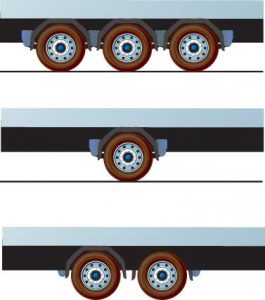HGV Licence Categories and Restrictions
21 February 2020
As a fleet owner, it is essential you are aware of the rules and regulations surrounding licence categories for HGVs. Depending on specific vehicle weights and sizes, licence categories can vary. The last thing you want is someone driving your vehicles who does not have the correct qualifications to do so. A good working knowledge of licence categories and restrictions is essential for any transport professional. Just as important is that you are regularly checking your driver’s licences in accordance with the categories, which is a requirement for O-Licence holders.
Maximum Weight for Goods Vehicles
The maximum weight for HGVs will take into account a few things; Gross Vehicle Weight (GVW) – the weight of the vehicle alone, Gross Train Weight (GTW) – the weight of the vehicle and any trailer, and Road Friendly Suspension (RFS) – air or air equivalent system.
Rigid Motor Vehicles
2 Axles – 18,000kg
3 Axles – 25,000kg (26,000kg with twin tyres and RFS)
4 Axles – 30,000kg (32,000kg with twin tyres and RFS, and outer axle spread 6.4m+)
Articulated Vehicles

3 Axles – 26,000kg
4 Axles – 36,000kg (38,000kg if the combination is a 2-axle tractor and 2-axle semi-trailer where the gross weight of the tractor does not exceed 18,000kg and the semi-trailer does not exceed 20,000kg)
5 Axles – 40,000kg
6 Axles – 44,000kg
Operations at GVW above 44 tonnes are covered by Special Types Goods Orders
Drawbar Combinations

A distance of not less than 3m must be between the rear axle of the vehicle and the front axle of the trailer.
4 Axles – 36,000kg
5 Axles – 40,000kg
6 Axles – 44,000kg
Maximum Axle Weight
Single (non-driving) – 10,000kg
Single (driving) – 11,500kg
Tandem (driving) – 19,000kg
Tandem (non-driving) – 20,000kg
Tri-axle Bogie – 24,000kg
The maximum axle weight allowed can vary greatly depending on the number of axles, spacings, spreads and the type of suspension and tyres.
Driving Licence Categories
As a fleet owner, it is essential you are aware of the category of licence your drivers hold. If you have different sized vehicles in your fleet this is especially important as you need to ensure drivers are qualified for specific vehicles.
As licence categories have changed over time, holders of class 2 and 3 licences may have ‘grandfather’ rights to be able to drive category C and E vehicles which are restricted to drawbar outfits but you should first check the licence for details.
Category B
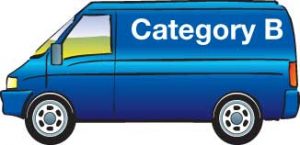
This includes cars and any vehicle not over 3.5 tonnes maximum permitted weight (MPW) with no more than eight seats, not including the driver. They can also have a trailer where the MPW of the trailer does not exceed 750kg or the gross train weight (GTW) of the vehicle and trailer does not exceed 3.5 tonnes.
Category C1
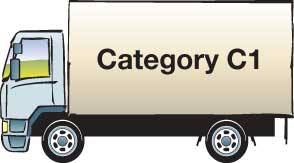
Category C1 vehicles are over 3.5 tonnes but below 7.5 tonnes MPW. They can also draw a trailer which does not exceed 750kg. For those who have ‘Car’ licences issued prior to 1997, category C1 vehicles can automatically be driven, however for those who were issued these licences after 1997 they’ll need to take a C1 test.
Category C1+E
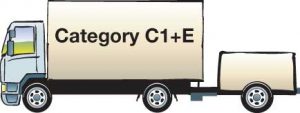
This would include a combination where the vehicle is above 3.5 tonnes and below 7.5 tonnes with a trailer exceeding 750kg. The combination must not exceed 12 tonnes GTW and for those with car licences issued prior to 1997, this is restricted to 8.25 tonnes.
Category C
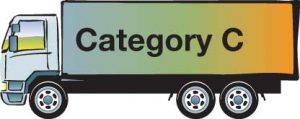
Category C includes any vehicle exceeding 3.5 tonnes MPW, but not those in categories DFGH. Again, this can include a trailer not exceeding 750kg. All rigid LGVs (the old HGV Class 2 & 3 licences) fall into Category C.
Category C+E

This is a combination where the prime vehicle is in category C, but the combination would not be. For example, the trailer may exceed 750kg. Larger vehicles such as these require a lot of fuel to run and taking into consideration their fuel efficiency and that of your fleet is very important.

